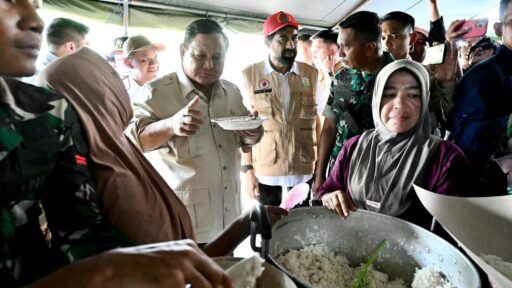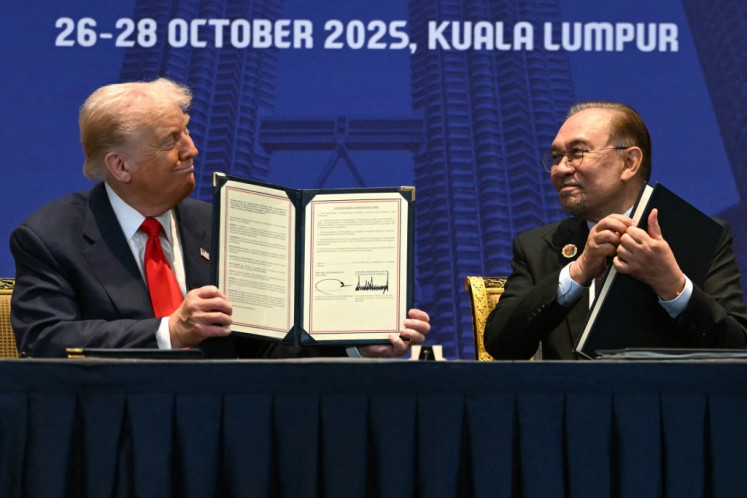Popular Reads
Top Results
Can't find what you're looking for?
View all search resultsPopular Reads
Top Results
Can't find what you're looking for?
View all search resultsBoosting agriculture’s role
With increasing frequency and magnitude, disasters and conflicts are causing untold human suffering in many parts of the world
Change text size
Gift Premium Articles
to Anyone
W
ith increasing frequency and magnitude, disasters and conflicts are causing untold human suffering in many parts of the world.
We need more concerted efforts to end conflict, alleviate suffering and reduce risk and vulnerability conditions facing millions of people, most of whom are poor and live in rural and marginalized areas of developing countries.
This, essentially, is the aim of the World Humanitarian Summit convened by United Nations Secretary-General Ban Ki-moon next week. It seeks to build on the momentum of an extraordinary series of commitments by the global community.
The recent adoption of a sustainable development agenda to end hunger and poverty and to “leave no one behind”, a universal climate agreement and a new framework to reduce disaster risk and enhance resilience are important steps in the right direction.
But we must go much further and radically transform how we perceive and implement humanitarian efforts. Crises are not only humanitarian emergencies. Many are also about neglect and lack of development and as such cannot be solved by humanitarian action alone.
In practical terms, it means moving beyond responding with short-term, relief measures and invest much more in tackling the root causes of crises. It means building resilience and strengthening the livelihoods of people in ways that not only drive recovery from war, disease, floods and other shocks, but also help to reduce the impact of these crises and, where possible, prevent them from taking place altogether.
Agriculture and rural development are key to strengthening livelihoods of the most vulnerable, including hundreds of millions of small-scale family farmers who are responsible for producing an important share of the world’s food.
And it is they who are most at risk. The damage is there for all to see. Extreme weather events, such as those associated with El Niño wreak havoc across wide swathes of the rural areas of the developing world, animal diseases disrupt food chains and wars force millions to abandon their homes, fields and livestock and become migrants at a scale not seen since World War II.
Meanwhile, the agricultural sector, which bears almost 22 percent of damages and losses caused by natural disasters and up to 85 percent in case of drought, receives on average less than 4 percent of the total in humanitarian aid.
In this context it is crucial to stress that investing in livelihoods is not only the just thing to do, but it also makes sense from a cost-effectiveness point of view by helping to address the root causes of conflict, reduce the impact of future shocks and prevent a deepening of vulnerabilities and the on-set of a vicious circle. Expanding access to social protection systems is crucial to underpin resilience — in humanitarian response as well as in development.
In the case of natural hazards, it is four to seven times more cost-effective to invest in disaster-risk reduction than to rely on emergency response. Yet only 0.4 percent of Official Development Assistance is spent on disaster-risk reduction.
FAO provides both humanitarian and development assistance. We firmly believe in prioritizing early warning, prevention and preparedness to safeguard livelihoods, especially in the rural areas. Around the globe, plenty of evidence exists on the benefits of this and on how it reduces the need for emergency interventions.
More generally, we see how investment in agriculture helps strengthen the self-reliance and dignity of vulnerable rural communities reducing the need for food assistance. We have found that US$200 in support enables a Syrian farmer to produce two tons of wheat, enough to feed a family of six for a year and provide seeds for future planting. This is a fraction of the economic cost of food aid, not to mention the dramatic human costs.
If we want to address growing humanitarian needs we need to move beyond business as usual and manage crises differently .We need to acknowledge that the interventions made must have a long-term impact on the beneficiaries, especially those in the rural areas, and then act accordingly. It is the only way we can ensure that nobody is left behind.
___________________________
The writer is director general of the Food and Agriculture Organization.










